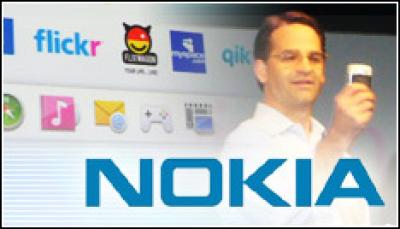As Nokia seeks to regain lost ground in the United States, the Finnish handset maker has reportedly called off the exclusive US release of its X7 handset on the AT&T network. So says the Wall Street Journal.
It would have been Nokia’s first smartphone to launch exclusively with a US carrier under the direction of Stephen Elop, the former Microsoft executive who replaced Olli-Pekka Kallasvuo as Nokia CEO in September 2010.
Citing “people familiar with the situation,” the Journal reported 19 January that AT&T and Nokia intended to show off the phone in advance of the Mobile World Congress trade show, which runs 14 to 17 February in Barcelona. However, believing that the X7 “wasn’t going to receive enough marketing and subsidies support from AT&T,” Nokia reportedly decided to pull the phone.
Lost Ground
Nokia Communications Director Laurie Armstrong told eWEEK that Nokia doesn’t comment on market rumours or speculation. “That said,” she added, “it is well-publicised that we are working to regain leadership in the US market, and we are in active discussions with our operator partners on that strategy. We look forward to bringing meaningful solutions to market, together with our operator partners, and when we have something to announce, we will do so.”
Despite being the worldwide mobile-phone market-share leader, Nokia has had a difficult time producing a smartphone that can effectively compete against the market’s major players – namely, the Apple iPhone, Research In Motion’s BlackBerry handsets and the ever-increasing number of high-end devices running Google’s Android operating system.
 Among its steps to “regain leadership,” Nokia introduced four new smartphones in September at its Nokia World 2010 conference – the N8, C6, C7 and E7 – and announced that a change was nigh.
Among its steps to “regain leadership,” Nokia introduced four new smartphones in September at its Nokia World 2010 conference – the N8, C6, C7 and E7 – and announced that a change was nigh.
“Nokia is going through a tough, challenging transition. We have a lot of work to do,” Niklas Savander, executive vice president of markets at Nokia, told the crowd during an opening address. But, he added, “today, we shift into high gear in Nokia’s fight back in smartphone leadership.”
Savander also reminded the audience that Nokia sells more smartphones than any of its competitors. “Last quarter, more people bought Nokia smartphones than Apple and Google combined,” he said.
Android Competition
In the United States, however, Nokia doesn’t have quite the following that it does abroad, and a month before Savander’s statement, research firm Gartner announced that Google’s Android had become the No. 1 smartphone operating system stateside.
The unusually shaped Nokia X7 smartphone is rumored to feature a 4-inch AMOLED (active-matrix organic LED) capacitive touch-screen, an 8-megapixel camera, four speakers and the Symbian 3 operating system. Reportedly, it will have a microSD slot with support for up to 32GB of memory, a 680MHz ARM-designed processor and WiFi b/g/n connectivity, as well as Bluetooth, 3G, GPRS (general packet radio service) and EDGE (Enhanced Data rates for GSM Evolution, also known as enhanced GPRS) support.
Should Nokia truly decide to keep the X7 off of AT&T’s roster, it would likely put more pressure on its N8 smartphone – which, once it finally shipped, following delays, was found to have issues switching on properly. Or a “very small number” of the handsets did. In a video on the Nokia blog, Savander said the issue had been figured out and that Nokia, as a precautionary measure, had “taken immediate action across the product line.”
Repair site iFixit performed a teardown of the N8 in October 2010 and found it to be “full of awesome features.” It was particularly keen on some design elements, calling them “genius,” and the phone’s 12-megapixel camera, which it described, affectionately, as “a honker.”
Nokia’s Armstrong was unable to share Nokia’s plans for Mobile World Congress, but implied that plans were indeed under way. She did share, however, that CEO Elop will deliver a keynote 16 February, though he doesn’t yet appear on the confirmed keynote list, which includes Twitter CEO Evan Williams, Google CEO Eric Schmidt, and AT&T CEO and President Randall Stephenson.




